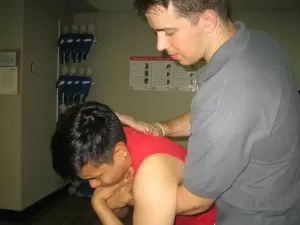
Getting trained in CPR is no longer monopolized by people who work in healthcare. CPR training is available to the general public, whether or not a person is in healthcare or is a healthcare provider. Seattle CPR is one of the best providers in Seattle, Washington because of the high quality training programs offered at the cheapest possible rates. There is a large selection of programs available to trainees, categorized into Basic and Advanced Life Support.
Sign up for CPR training today
You can sign up for training through the Seattle CPR provider website, with the online application form. Other ways to sign up are through e-mail and over the telephone. Enrolment in person is still highly encouraged by the Seattle CPR staff. With these varied ways to sign up for training, students can find the easiest way for them to enrol.
Basic Life Support training
Seattle CPR has three BLS programs available for enrolment. BLS programs are skill building courses that run for approximately four hours. Trainees are taught how to give chest compressions, rescue breaths, and defibrillation to adult and pediatric victims. A little first aid is also included in the program, with trainees learning how to manage common injuries or emergencies such as bleeding and choking.
There are two basic CPR programs, one for HCPs and one for the public. The public program is shorter by 30 minutes and runs for only 4 hours. The HCP program runs for 4.5 hours. The curriculum covers the same topics but changes the approach by which lessons are given depending on the audience. The basic CPR programs teach trainees how to give single-person CPR, first aid, and AED.
The Basic Life Support for HCPs program is 4.5 hours long as well. They teach both single and 2-person CPR and the latest BLS guidelines released by the American Heart Association. First aid and defibrillation training is still included in this program. Re-certification is four hours long.
Advanced Life Support training
While BLS training only teaches trainees how to stabilize a victim before medical attention, advanced life support teaches trainees how to give medical attention to a victim once he or she is stable. Medical attention involves the use of equipment like bag valve masks, diagnostic exams like ECG reading, and medication. Medication used during and after a code is a very important part of ALS training, especially the difference in dosage and indication for adult and pediatric victims.
There are two ALS programs: ACLS and PALS. ACLS or Advanced Cardiac Life Support is a 16-hour program that runs for two days. It teaches trainees how to manage an adult victim or cardiac arrest. Re-certification is 5 to 6 hours long. Trainees use adult-sized bag valve masks, ET tubes, and adult-dosages for medication in ACLS.
PALS training runs shorter for only 14 hours, but also spread out over two days. It has the same basic structure as ACLS training but focused on pediatric victims. A person is considered ‘pediatric’ if he or she is younger than 18 years old. Trainees are taught how to give CPR to an infant and young children.
